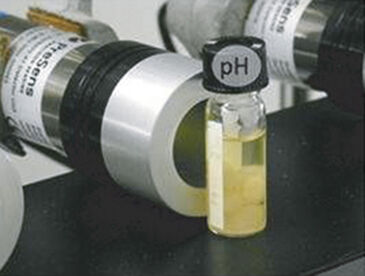Watch tutorials, webinars and informative videos about PreSens optical sensor systems.
Immobilized Plant Cells - From DSMZ to the Customer
VisiSens technology used to detect metabolic activities of immobilized plant cells during simulated cell transport in a closed system
Nicole Brinkmann, Martina Westphal, Elke Heine-Dobbernack, and Martin Schumacher
Leibniz Institute DSMZ - German Collection of Microorganisms and Cell Cultures, Braunschweig, Germany
The DSMZ is one of the largest biological resource centers worldwide. Its collections currently comprise almost 40,000 items, including about 700 undifferentiated plant cell lines. The use of plant cell lines for fundamental as well as applied research relies on stable material. For plant cell lines the reliable long term preservation and distribution is an essential aspect and still not routine. Research activities therefore aim to develop new and advanced methods for plant cell cryopreservation but also to improve transport to customers. The VisiSens™ CO2 imaging system was used to monitor metabolic activity and with it fitness of living cells in air-tight transport systems. CO2 monitoring together with pH and O2 imaging in the sealed vials revealed that immobilized plant cells show metablic activity even after 10 days of storage in the transport vessels.
In contrast to bacterial cells, plant cell lines are difficult to cryopreserve due to high water contents and subcellular structure. A routine long term preservation method is still missing, and regular routine culture transfer causes a constant workload, and continuous sub-culturing bears the risk of losing cultures by laboratory failure or by genetic / epigenetic changes. Our research, therefore, focuses on the establishment of suitable freezing and distribution methods for plant cell lines. One approach for cryopreservation uses the encapsulation of plant cells in alginate beads, which are then cryopreserved and stored in liquid nitrogen until they are requested by the customer. As plant cells often do not survive transport at - 70 °C and transport at liquid nitrogen temperatures is economically not feasible, reactivated cells have to be delivered in the living state. Transport vials containing cells and medium have to be hermetically sealed to maintain sterility during transport. Plant cell lines are fed heterotrophically under culturing conditions, i. e. they are photosynthetically inactive and use sugar as carbon source supplied with the culture medium. As a consequence they produce carbon dioxide rather than consume it. The VisiSens™ CO2 imaging system was applied to visualize carbon dioxide changes in an air-tightly closed transport system. Our goal was to monitor metabolic activity indicating fitness of living cells by detecting the accumulation of the metabolic end product carbon dioxide. Monitoring of carbon dioxide was supplemented by recording pH and O2 in the same system.
Materials & Methods
Plant cells of actively growing liquid cultures of Solanum tuberosum Desirée and Nicotiana tabacum BY2 were washed twice with medium (without CaCl2). 10 mL of each culture were filled in a Falcon tube (50 mL) and filled up to 30 mL with 3 % alginate solution. The mixture of cells and alginate was gently mixed and then dripped into a 100 mmol CaCl2 solution using a pipette with cut tip. After stirring for 20 min the supernatant was discarded and alginate beads were washed twice with CaCl2 free solution. Freshly immobilized plant cells were transferred into plastic vials equipped with pH, O2 and CO2 sensors (Fig. 2). Four alginate beads per vial were doused with 1 mL of plant medium before vials were air-tightly closed. As controls the respective plant media without cells as well as the sensor foil alone were measured. All samples were stored in the dark at room temperature and were retrieved only for monitoring. Immobilized cells were monitored for ten days.
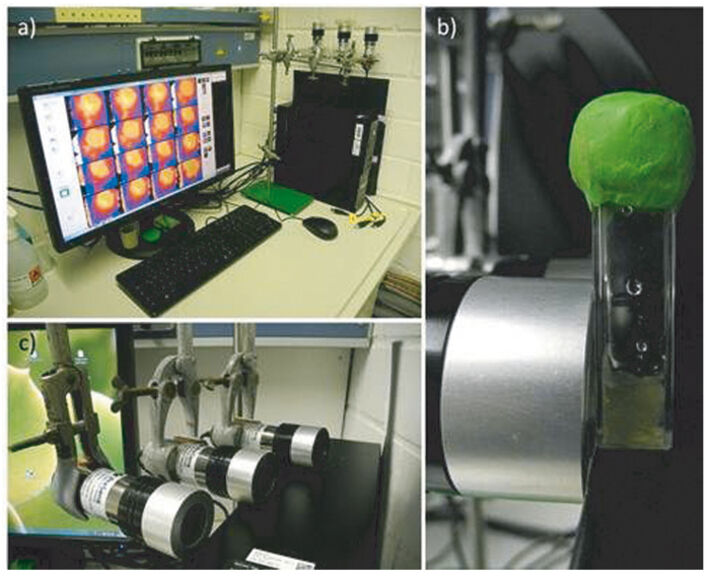
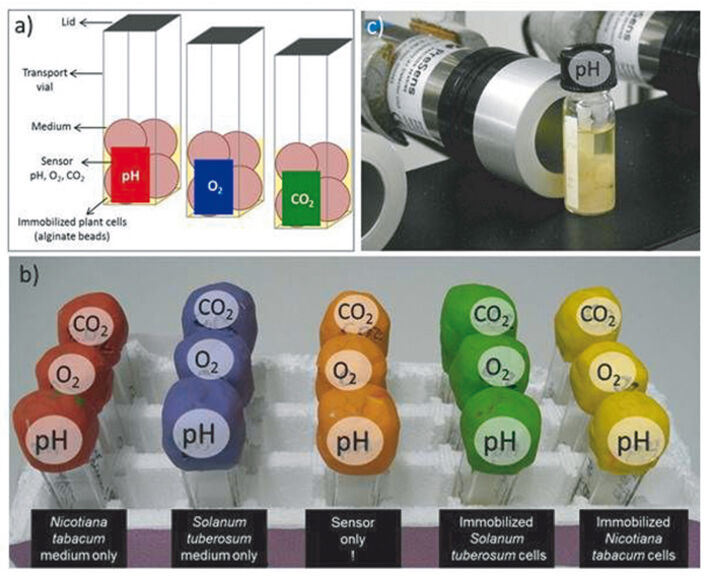
Metabolic Acitivity of Immobilized Plant Cells
Changes of CO2, pH and O2 in an air-tightly closed system containing immobilized plant cells of S. tuberosum and N. tabacum, respectively, have been monitored for ten days with VisiSens™ (Fig. 3). In Fig. 3a changes of CO2 concentration in the liquid medium surrounding S. tuberosum beads are shown. Within ten days of monitoring (consisting of 20 individual measurements) a strong increase of CO2 could be recorded. Consequently, the pH decreased and the medium was getting more acidic. Furthermore, we observed a distinct consumption of O2 over time (Fig. 3a). Figure 3b shows the changes of CO2, pH and O2 in the same system using immobilized plant cells of N. tabacum. A total of 14 measurements revealed an increase of CO2 in the liquid medium surrounding N. tabacum. As in vials with S. tuberosum the raising CO2 content caused the plant medium to become acidic. However, compared to S. tuberosum the O2 consumption and CO2 production of N. tabacum was weaker. Monitoring the fitness parameters of living cells in sealed transport vials with imaging technology indicated metabolic activity of immobilized cells. After two weeks of monitoring plant cells started to grow out of the alginate beads in the air-tightly closed vials. This shows that cells were still alive and confirmed that the detected paramter changes were due to metaolic activity of the cells.
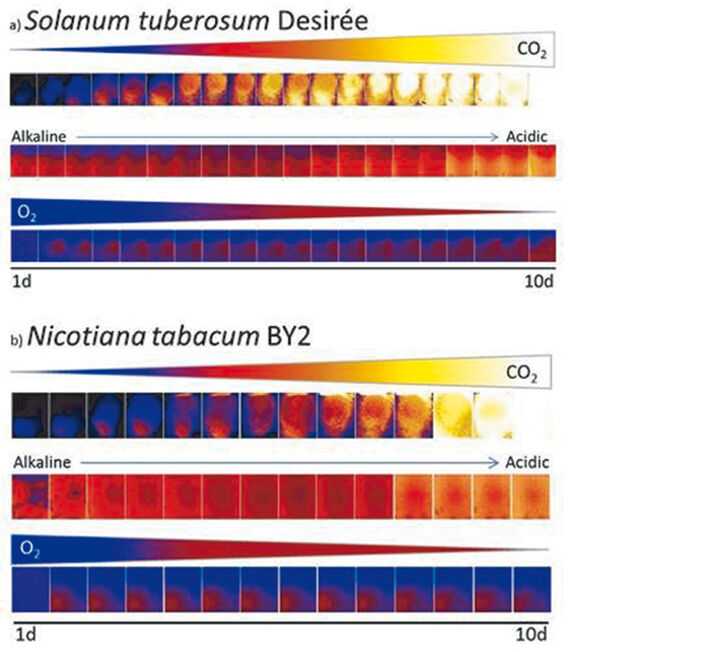
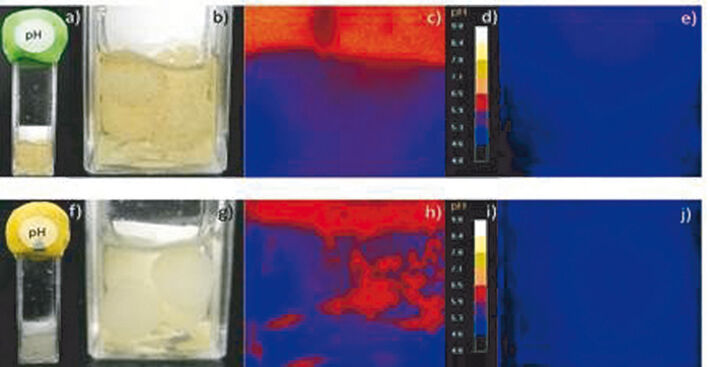
pH Changes in the Transport Vials
During 10 days of monitoring in both approaches, i. e. immobilized cells of S. tuberosum and N. tabacum, the pH of the surrounding medium in the transport vials ranged from about 6.5 to 4 (Fig. 4). In the beginning an obvious pH difference between medium (around pH 5) and vial atmosphere (pH 6 to 6.5) was detectable (Fig. 4c, h). After 10 days the pH of both phases had equalized to a value below 4.5 in both approaches (Fi. 4 e, j). Controls (medium / sensors only) did not show any relevant changes.
Conclusion
Shipping of plant cell lines can take several days of transport depending on the destination. During transport cells have to stay in a tightly sealed environment to maintain sterility. It is difficult to predict the time at which depletion of nutrients (sucrose, O2) or accumulation of end products (CO2) limits survival of cells under these conditions. Using VisiSens™ we were able to observe the metabolic activity of immobilized plant cells in a hermetically sealed transport vial for the first time, as the system allows non-invasive measurements. Our monitoring approaches revealed that immoblized plant cells show metabolic activity even after 10 days of storage in a closed system and growth of plant cells confirmed VisiSens™ observations. As a transport usually takes less than ten days, fitness of cells can be guaranteed.

